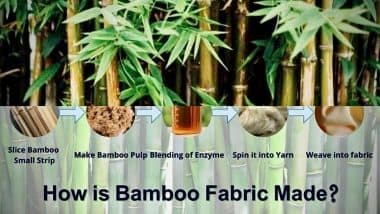Bamboo is not a viable choice as an organic or non-toxic material. The industry has aggressively marketed it as the eco-friendly future of fashion, with countless blogs extolling the benefits of bamboo fabrics. However, the truth is that while bamboo is a fast-growing plant, that does not equate to a worry-free fabric. Raw bamboo fibre cannot be directly transformed into fabric; it must undergo a harsh chemical process known as viscose rayon production. This involves dissolving bamboo plant matter with toxic solvents like carbon disulfide to produce a pulp that is then further treated with hazardous chemical additives such as formaldehyde and bleaching agents. The chemical-intensive manufacturing process results in significant air and water pollution, and the solvents used have been linked to neurological damage, reproductive issues, and cancer among factory workers. Stella McCartney Buys LVMH’s Share Back: Sustainability, Ethics and Fashion.
Sustainability Police On Bamboo Material
The toxicity concerns do not stop there. The various dyes, bleaches, and softeners applied to bamboo fabric can be irritating and potentially harmful upon direct contact with the skin. Residual chemicals left in the bamboo textile fibres can be absorbed through the skin when wearing bamboo clothing, making it far from safe, particularly for children. Coldplay Concert: A Spectacular Fusion of Music and Sustainability!
The production of bamboo fabric invariably involves hazardous chemical treatments to convert hard bamboo pulp into soft, wearable fibres. This process utilizes potent solvents and acids, raising serious concerns about the potential environmental hazards and pollution stemming from wastewater discharge.
Moreover, the transportation of bamboo, especially when processed in countries distant from where it is grown, further exacerbates emissions. As consumers increasingly prioritize eco-conscious choices, it is imperative to not only acknowledge the innovative aspects of bamboo fabric but also critically assess the overall sustainability of its production lifecycle.
Achieving the right balance between innovation and environmental responsibility is crucial. This requires exploring more sustainable processing methods, promoting local production, and ensuring transparency within supply chains. A holistic approach to the textile industry is essential for fostering greater eco-consciousness while embracing innovation. It's time to hold the industry accountable and demand real change. What steps will you take toward achieving this balance?
(The above story first appeared on LatestLY on Jan 30, 2025 04:59 PM IST. For more news and updates on politics, world, sports, entertainment and lifestyle, log on to our website latestly.com).













 Quickly
Quickly

















